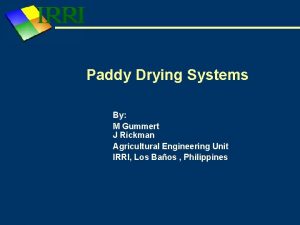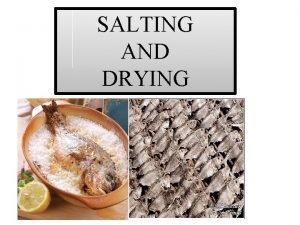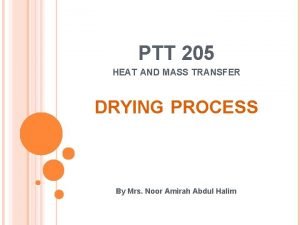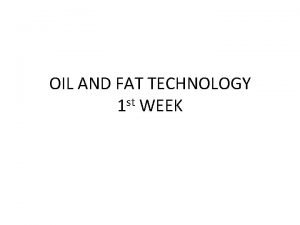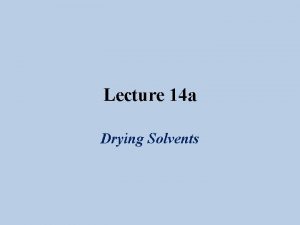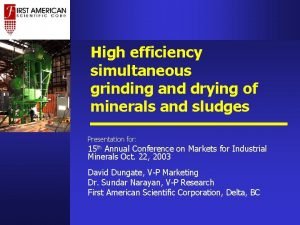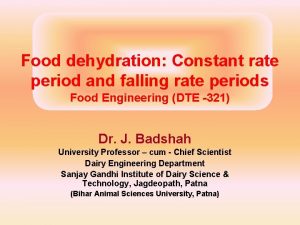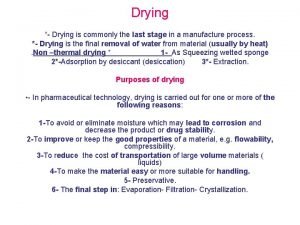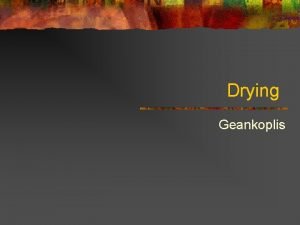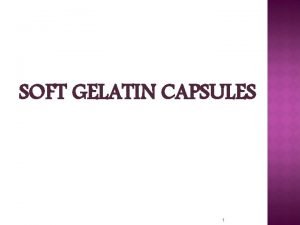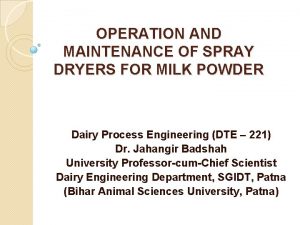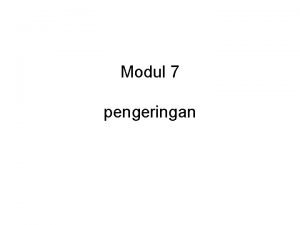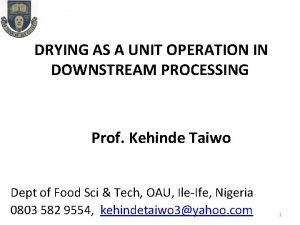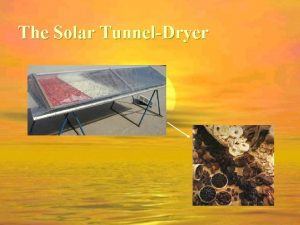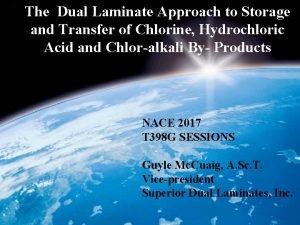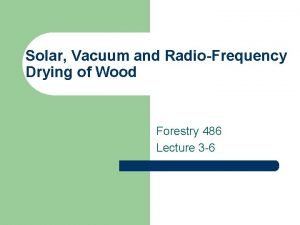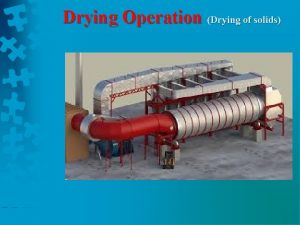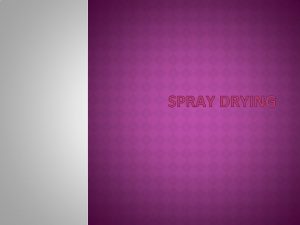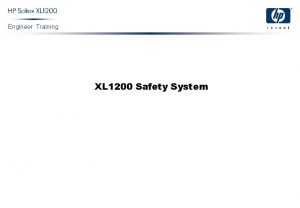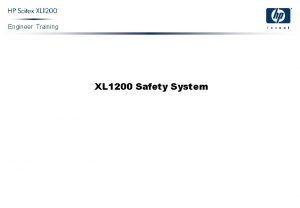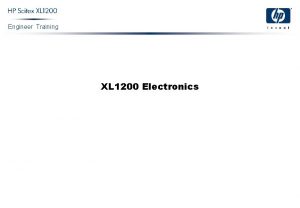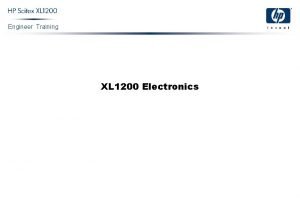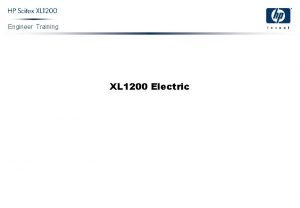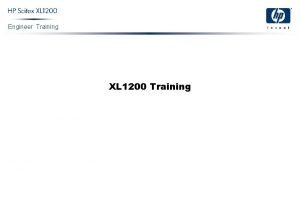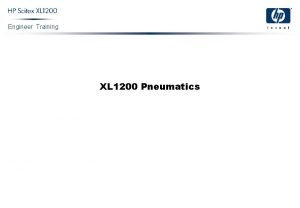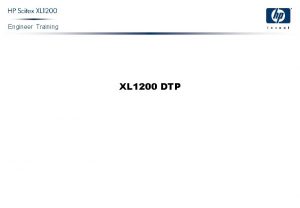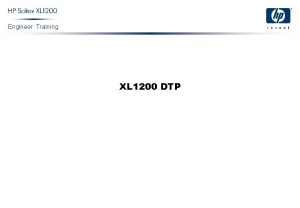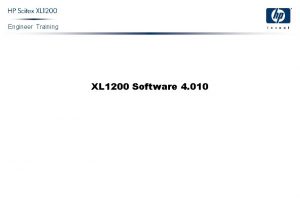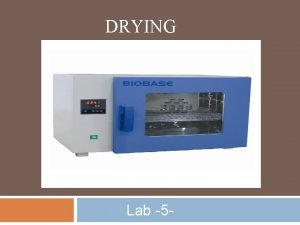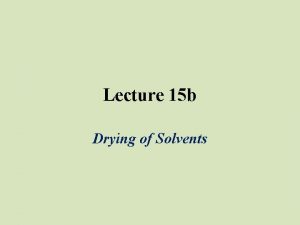Engineer Training XL 1200 Drying System Engineer Training

















- Slides: 17

Engineer Training XL 1200 Drying System

Engineer Training Confidential XL 1200 Drying System 2

Engineer Training Introduction q This presentation presents the elementary principles of the XL 1200 drying system. q The goal of the drying system is to dry the ink on the media while printing. q Drying - media that pass the Free Fall system without any sticking sign. Confidential XL 1200 Drying System 3

Engineer Training Theory and Background By heating the ink the substrate dries. There are three methods to dry substrates by heating: q Conduction Heat Transfer. q Convection Heat Transfer. q Radiation Heat Transfer. Confidential XL 1200 Drying System 4

Engineer Training Theory and Background (Cont. ) With the XL 1200, we use all three methods: q Radiation - by IR. q Forced convection - by ventilation. q Conduction - by heating the table. Table heating is caused naturally by IR Radiation. There is no additional heat in the upper table! Confidential XL 1200 Drying System 5

Engineer Training Theory and Background (Cont. ) Radiation Forced convection Conductivity Confidential XL 1200 Drying System 6

Engineer Training Conduction Heat Transfer q When a temperature gradient exist in a body, energy transfers from a high-temperature region to a low- region. q We say that the energy is transferred by conduction. q With the XL 1200, the upper table is heated by radiation and transmits the heat by conductivity to the back side of the media. Confidential XL 1200 Drying System 7

Engineer Training Convection Heat Transfer q It is well known that a wet surface dries faster when placed in front of a fan than when exposed to still air. q The phenomena is amplified when there is hot air. q With the XL 1200, the ventilation system does exactly the same to help dry the ink. q The air inside the hood is heated by the frame (that heated by radiation) and forced to the ink surface by the ventilation system. Confidential XL 1200 Drying System 8

Engineer Training Conduction Heat Transfer (Cont. ) In contrast to the mechanisms of conduction and convection, where energy transfers through a material, heat by radiation can be transferred through a vacuum region. The mechanism in this case is electromagnetic radiation. The radiation that causes heat to transfer is called Thermal Radiation. With the XL 1200, the IR lamps transmit very high thermal radiation to the ink surface that cause intensive drying. Confidential XL 1200 Drying System 9

Engineer Training Conduction Heat Transfer (Cont. ) Because of the intensive radiation, the media temperature rises very high and there is a possibility of media damage. The ventilation also helps to cool the media by absorbing the heat with the solvent from the ink surface. This is why the ventilation system in the XL 1200 is always turned on. The IR lamps are turned off, automatically, when the machine stops printing. Confidential XL 1200 Drying System 10

Engineer Training Heat and Solvent Balance 1. Most of the heat is transferred to the ink by thermal radiation. 2. The ink absorbs the heat and the ink temperature rises. 3. To eliminate high temperature, that can damage the ink and the media, the air is forced by the ventilation system to absorb the heat as well as the solvent from the ink. 4. The air temperature rises and the solvents vaporize in the air. q To eliminate high temperature and high solvent concentration, we are sucking 20% of the air outside the hood via holes on the top. This action keeps the temperature balance as well as solvent rejects from entering the hood. Confidential XL 1200 Drying System 11

Engineer Training Confidential Heating System XL 1200 Drying System 12

Engineer Training Confidential Heating System XL 1200 Drying System 13

Engineer Training Confidential Front Side XL 1200 Drying System 14

Engineer Training Confidential Back Side XL 1200 Drying System 15

Engineer Training Confidential Left Side XL 1200 Drying System 16

Engineer Training Confidential Right Side XL 1200 Drying System 17
 Advantages of panicle drying
Advantages of panicle drying Dry salting
Dry salting Constant and falling rate period of drying
Constant and falling rate period of drying Saponification value
Saponification value Drying solvents
Drying solvents Simultaneous grinding and spray drying
Simultaneous grinding and spray drying Constant rate
Constant rate Disadvantages of freeze drying
Disadvantages of freeze drying Critical moisture content formula
Critical moisture content formula Soft gelatin capsules definition
Soft gelatin capsules definition Spray dryers for milk powder
Spray dryers for milk powder Cross circulation drying
Cross circulation drying Drying in downstream processing
Drying in downstream processing Solar tunnel dryer for drying coconuts
Solar tunnel dryer for drying coconuts Dual laminate tanks
Dual laminate tanks Five stages of clay
Five stages of clay Rfv kiln
Rfv kiln Is paint drying a chemical change
Is paint drying a chemical change
